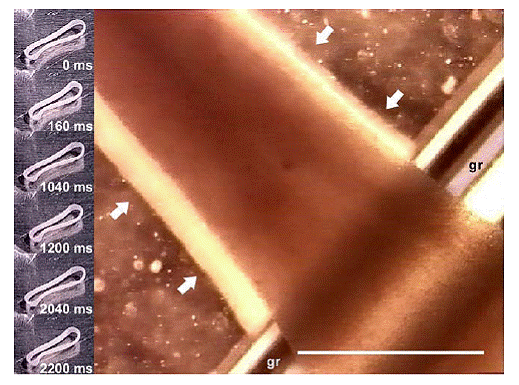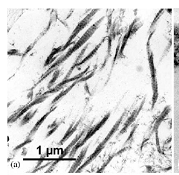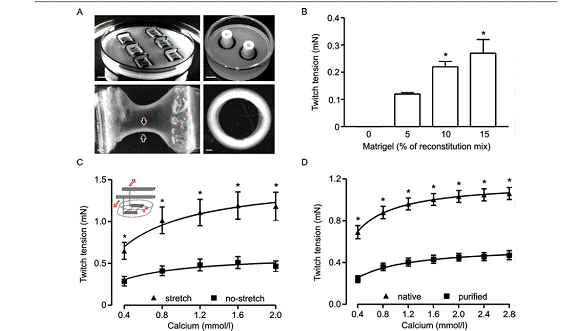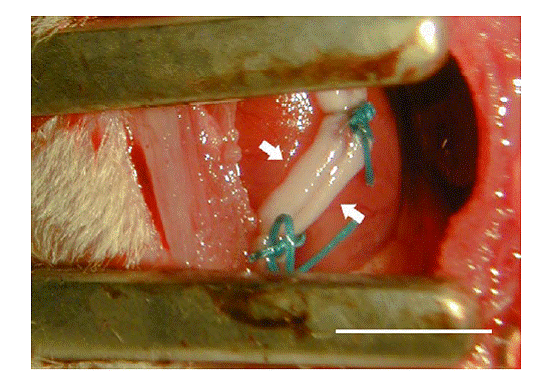|
Strategy #2: Cells in primarily soluble matrices
An alternative strategy is to use a solubilized scaffold material. The approach is to isolate specific cells and mix the cells with liquid materials. The components will entrap and aggregate cells. The mixture placed in casting molds of different shape and size under controlled culture conditions. Then, implant the construct in the body and direct new tissue formation into the scaffold. The advantage of using soluble matrices is to allow for the cardiac cells to freely form contractile aggregates and organize into complex myocardial structures without obstructing preformed materials.
Research achievement with this strategy:
Zimmermann WH, et al. Engineered heart tissue for regeneration of diseased hearts. Biomaterials 2004; 25:1639-1647
The following images are of the Engineered Heart Tissue. 
Zimmermann and et al. constructed an engineered heart tissue (EHT) made from a liquid matrix mixture composed of soluble collagen type I, extracellular matrix proteins (Matrigel), chick embryo extract, horse serum-containing medium, and freshly isolated cardiac cells from neonatal rats. The soluble collagen type I promotes organization of cardiac cells into synchronously contractile aggregates. The cell composition of EHTs consist of almost all cell species found in the native heart including cardiac myocytes, fibroblasts, smooth muscle cells, endothelial cells, macrophages, and leukocytes. The diverse cell composition is important in construction the optimal cardiac tissue constructs. Currently, the EHT can have a thickness of 1 mm but thicker and larger constructs will require more research and better techniques. EHT is generated with circular geometry because mechanical load of stretching placed on the construct has better results with circular geometry compared to a square geometry. After 5-7 days, in culture, EHTs are spontaneously and synchronously contracting. The culture is continued under cyclic mechanical stretch for another 5-10 days. The cyclic loading provides better morphological, functional, and mechanical properties of EHT. For the following figure, the images in the left column show a contracting EHT in solution at various time points. The image on the right side show an EHT attached to a glass rod.

During EHT culture around 10-14 days, the structure of the construct changes from randomly oriented collagen fibers to more organized matrix structure with mature collagen with cross striation, shown in the following figure.

They discovered four factors that are important to create a strongly contracting EHT: (1) addition of Matrigel to the mixture (only in rat EHT) (shown in figure below part B), (2) EHT culture under mechanical load (shown in figure below part C), (3) a circular shape, instead of patches (shown in figure below part A), (4) utilization of cell mixtures rather than purified cardiac myocytes populations (shown in figure below part D).

The maximal force of contraction of EHTs is about 3mN/mm2 which is less than isolated muscle strips from rate hearts (about 20 mN/mm2 ).
EHTs have been tested in syngeneic Fischer 344 rats by implanting EHTs on healthy hearts, shown in the below figure. EHTs survive in vivo for at least 8 weeks, remain contractile, and become morphologically integrated with vascularization and innervation into the host myocardium. Although the contractile function was preserved in vivo, the construct did not improve the contractile function of the heart. Further, the transplantation of this construct required continuous immunosuppression to suppress rejection from the host.
 |